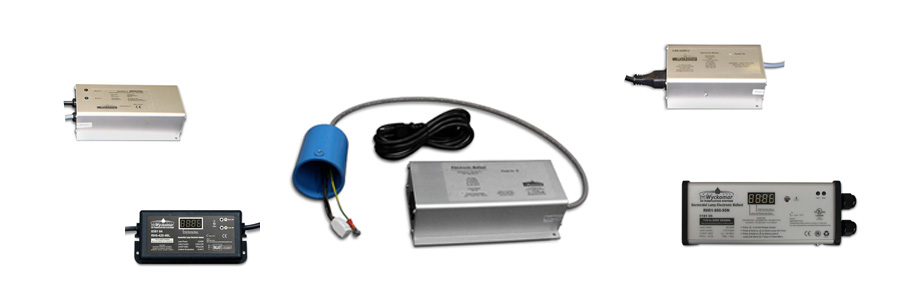The Water Blog Frequently Asked Questions about Wyckomar UV Systems #2
Why Is My Ballast Alarming?
Posted on January 4, 2014

A UV system comes with a ballast that transforms the hydro power to the electrical input that is needed to light up the UV lamp. If the lamp is not on in the UV system, the water is not being disinfected, and the ballast will go into alarm.
The eleactronic ballast in your UV system has a separate circuit for the alarm, so it will sound the alarm when it can not give power to the lamp. This can have two reasons: either, the lamp is burnt out, or the ballast itself is damaged.
A UV lamp has a lifetime of 9-11,000 hours of germicidal UV output, after that time it will stillk light up as a transucent bulb emitting a blueish light, but it will not kill bacteria any more. Therefore a lamp is changed once per year. If the lamp is not changed but left in the system, it wil eventually burn out - the filaments that create the electronic arch inside the lamp will become brittle and not light up any more. That will create an alarm in the ballast.
The other situation that can make the alarm ion the ballast come on is if the ballast itself has been damaged, from a lightning strike or a power spike in the grid. The ballast comes with an on-board MOV but does not replace a proper surge protecting device that is recommended on units especially in rural areas. Power outages can create odd frequencies and voltages in the power grid which can damage the ballast. Therefore we recommend the usage of a surge protector rated at 3600 Joules or more to protect the ballast from any damage. It is also recommended to plug the ballast into a sdedicated outlet, and not into the same outlet as a pump.
The alarm situation pon the ballast does not necessarily mean theat the lamp needs to be replaced. It only tells us that there is a problem giving power to the lamp. The lamp could be years old, still coming on, not emitting any bacteria-killing UV rays but creating a wrong saftey feeling for the owner. Therefore it is necessary to make notes about the frequency of lamp exchange, because the safety of the drinking water is dependent on the diligencce that is put into this step.
If the ballast is alarming, first we have to ask, when was the lamp changed last time. If the lamp change is less than a year ago, then we have to assume the ballast is damaged, because a lamp will not typically just stop working. The easiest way to proceed is if there is a second lamp around that is known to be OK, then we try if the ballast will light up this lamp. If there is no second lamp around we may want to get a new replacement lamp first before continuing. Once we have a lamp that we know is good plugged into the beeping ballast, can we tell whether it is the ballast or the lamp that was creating the alarm. If the ballast is good, it will come on with the new lamp. if the ballast is fried, it will beep even with the new lamp. This tells us that the ballast is the problem.
Course of actions if the ballast is fried: Please give us a call and explain the problem. We can either fix the ballast at the Wyckomar plant (if the version is not older than 4-5 years) or can ship you a new one to your house. For the repair, we need it shipped in, please make sure you call in first before shipping a ballast back.
Search The Water Blog
More Information
Please contact us at sales@wyckomaruv.com for more information